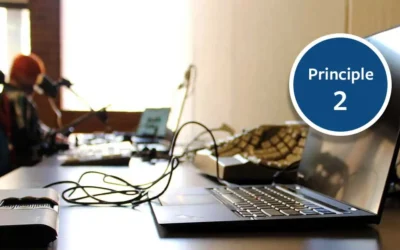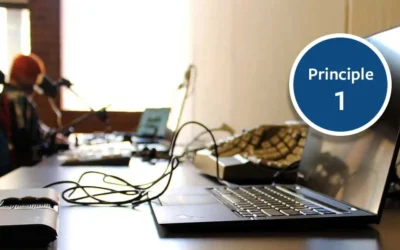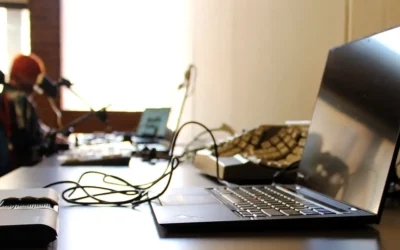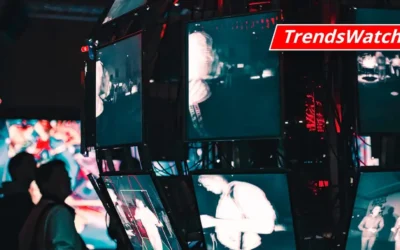Museum Professional Development: Invest in Yourself

Rachael Cristine Woody
Professional development has often been considered a luxury benefit of a museum job versus something required for the benefit of the museum.
In the past, the majority of development opportunities were only offered as in-person workshops or classes and usually cost money (in addition to travel expenses). Technology has helped us to evolve development delivery vehicle, and the pandemic has served as a catalyst to adapt development opportunities to virtual platforms and on-demand content, with a pivot to free to low-cost models. There are also more sources of knowledge we can easily access outside a classroom-setting that contribute to our development as a museum professional. So, regardless of whether you have a professional development budget or not, there are options available to help you invest in yourself. This post will outline the main sources I use for my professional development and I encourage you to explore each option to see what works best for you.
Locate Sources of Information to Develop Your Knowledge Base
Let’s begin with the easiest way to buff-up our museum knowledge: reading. Being up to date on professional literature as well as the latest museum trends improves our intellectual value on the job. We’re better equipped with industry-wide information and can make more effective decisions as a result. Books and articles are great for providing vetted information, but the static information can stale easily. I recommend pairing static literature with informal outlets that can be faster with news and information. These informal outlets can be blog posts, social media channels where museum professional communities can be found, setting Google Alerts (or similar) for topics of interest, and signing up for e-newsletters via professional organizations or news outlets that cover your content of interest. So as not to over-saturate yourself with information, I recommend choosing one or two options to begin with. Regardless of which you choose, you’ll grow your ability to spot on-coming trends and potential issues.
Read the Latest Literature:
- Books
- Articles
Follow the Trends:
- Blog Posts
- Social media
- Google alerts
- E-newsletters
Sign Up to Access Free to Low-Cost Online Content
One benefit that has emerged during our pivot to all things being virtual is that we now have access to two-years’ (and counting) worth of recorded content. Many of our national and regional organizations have produced content that can accessed for free or with the cost of your membership. The other benefit to everything being virtual is that we’re now familiar with various virtual platforms, and more professional development content is being delivered via affordable webinars or recorded content (not recorded from a live delivery). There are multiple benefits to this source of information:
- Online content is often recorded. So, if the live or premiere time doesn’t work for you, you can still access the content at a later date.
- The smaller time commitment permits you to take a risk and attend a session that sounds interesting, but you’re not sure if it’s a fit.
- The amount of webinar content available lets you be more selective about the webinars you attend as you’ll be able to find content that’s of interest to you.
Online Content Options:
- Webinars
- Recorded (On-Demand) Content
Consider Continuing Education
If you’re searching for professional development opportunities to move you to the next-level then pursuing a certificate program or taking a class may be what’s needed. This avenue requires the most in terms of both your time and money, but it is an investment in yourself as a professional. If there’s a specific area of interest or you want to erase a knowledge-gap, then you’ll be best served by pursuing a workshop or class (virtual or in-person) that can provide you with the specific skills or knowledge you seek.
Continuing Education Options:
- Workshop
- Class
- Certificate
Conclusion
Investing in yourself is never a bad decision, but it is a balance of what you need versus what you have the capacity (time and money) for. The best way to begin is to know what your options are and be thoughtful about what type of development you’re seeking. I find a mixed approach is often best and encourage you to experiment to find what works for you!

Rachael Cristine Woody
If you’d like to learn more about this topic, register here for Rachael’s upcoming webinar, “5 Steps to Intentional Museum Work” on February 23, 2022. Rachael Cristine Woody advises on museum strategies, collections management, and grant writing for a wide variety of clients. In addition to several titles published by Lucidea Press, she is a regular contributor to the Think Clearly blog and an always popular presenter. And learn about Lucidea’s Argus solution for powerful and innovative museum collections management.
Similar Posts
Museum Collections Online with Accessibility Principle 2: Operable
Compliance with WCAG Version 2.1 Principle 2: Operable
Museum Collections Online with Accessibility Principle 1: Perceivable
Compliance with WCAG Version 2.1 Principle 1: Perceivable, affecting information published from museum CMS to an online portal; expert guidance
Accessibility Standards for Museum Collections Online
A museum’s compliance with the ADA Title II 2024 update has benefits for its online content and for the museum’s community of users.
Museum TrendsWatch 2024: Digital Twins and Doom Loops & Combatting the Loneliness Crisis
Digital Twins is the construction of a digital surrogate for a person, place, or thing—one of several new concepts and trends in the museum sector.




Leave a Comment
Comments are reviewed and must adhere to our comments policy.
0 Comments